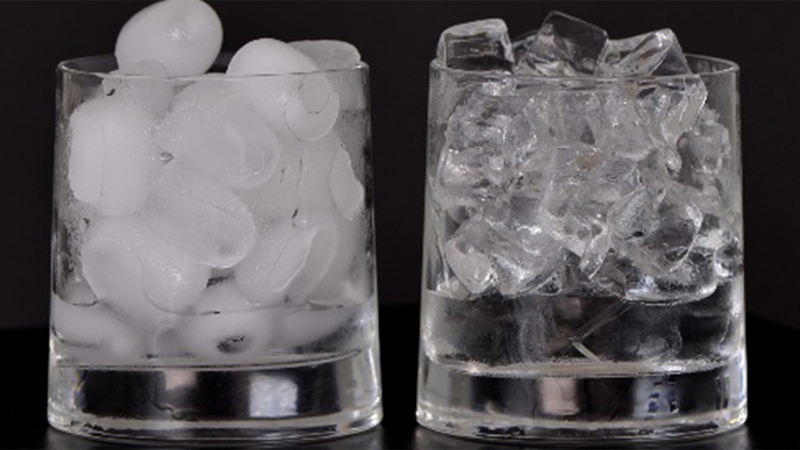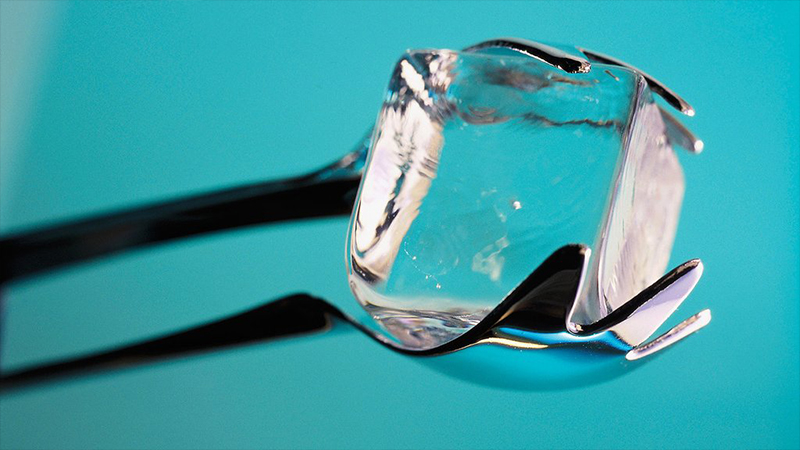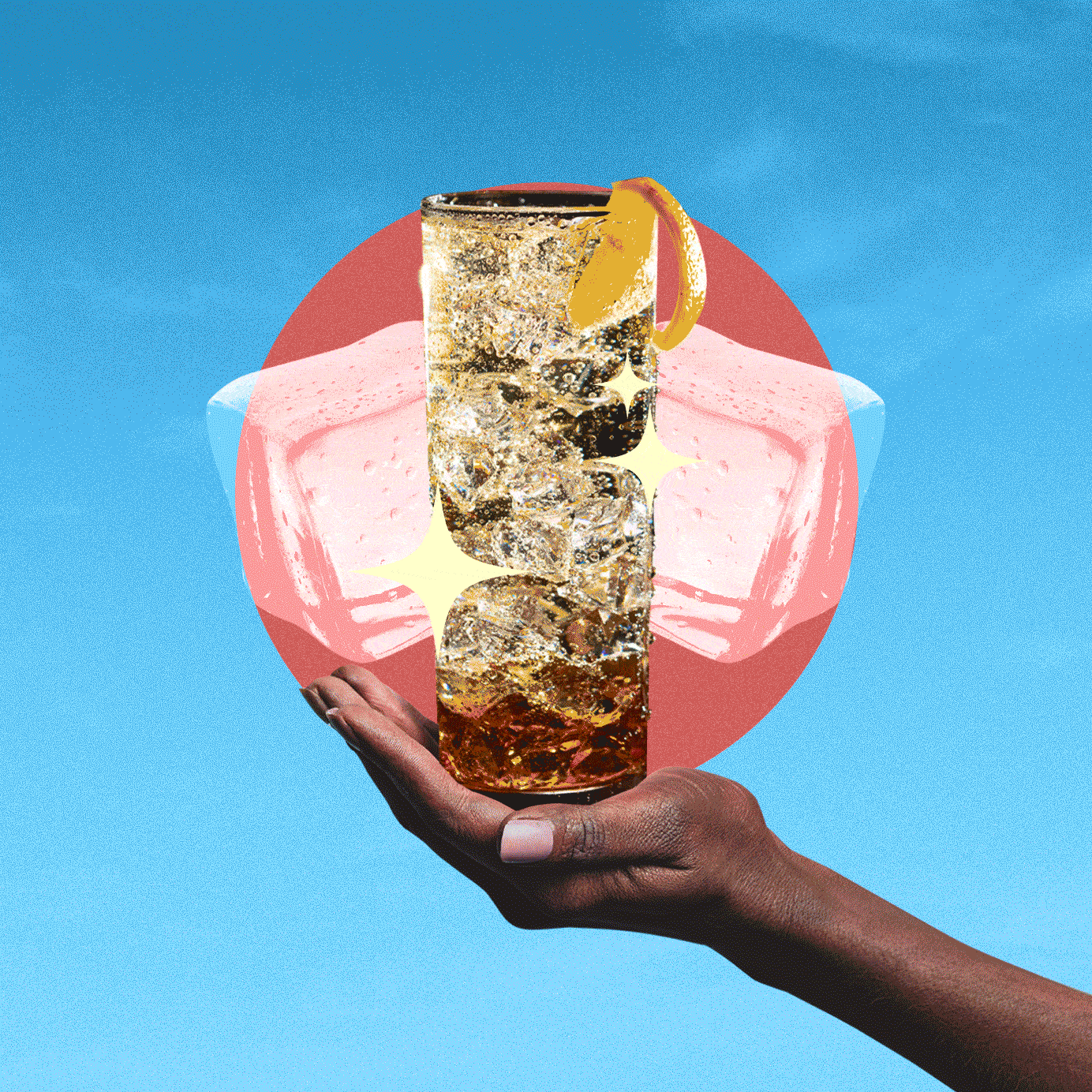This month, VinePair is exploring how drinks pros are taking on old trends with modern innovations. In Old Skills, New Tricks, we examine contemporary approaches to classic cocktails and clever techniques behind the bar — plus convention-breaking practices in wine, beer, whiskey, and more.
Have you ever poured yourself an ice cold highball, only to have the bubbles fizz out within seconds? While expired sodas or bad karma may be the culprits, there’s an unexpected reason that’s more likely to blame: You’re using the wrong ice.
When you pour effervescent drinks over ice, the CO2 in those beverages reacts with the imperfections on the ice, which can lead to excess bubbles, or nucleation. This, in effect, causes the bubbles to fizz out fast and go flat. “Any time a carbonated drink is put against a surface that is rough or porous, you will drastically increase nucleation,” says Dave Arnold, author of “Liquid Intelligence: The Art and Science of the Perfect Cocktail.” That’s because dissolved gas accumulates at these points of imperfection, creating bubbles that cause drinks to fizzle.

This means that smooth ice cubes with low surface areas provide the best chilled cocktails. When you freeze ice in molds, impurities and cloudiness become trapped in the center. “If that ice shatters, those shards can act as nucleation sites,” Arnold says. Therefore, if water is frozen into larger molds, nucleation sites are far less likely to interact with a beverage.
The cloudier the ice, the more oxygen pockets are present, meaning that a fizzy mixer is more likely to react and bubble over. So, if prolonged carbonation is your goal, bigger, clearer ice is the way to go.
“For a carbonated drink, in general, you want larger cubes, with the caveat that it won’t be as cold. But it also won’t dilute as much,” says Arnold, who recommends Collins spears — long, rectangular cubes that fit perfectly in highball glasses — for any sparkling beverage. For experienced bartenders, these can be carved from clear ice. But, for those looking for a quicker method, rectangular molds can also be purchased online.
Once you’ve found the right ice, be sure to temper it before adding it to your drink. “Any ice will crack if it’s cold when it goes in,” Arnold says. So to mitigate the risk of nucleation, take your ice out of the freezer and let it sit out until it reaches above freezing temperatures.

Another option is to forgo ice entirely and use a frozen glass instead. As frost tends to form on these glasses, for this method, it’s imperative that you pour your spirit in first before adding the carbonated mixer. This will allow the ice to “slick out,” Arnold says, creating a smooth surface for your mixer.
Not interested in purchasing new molds or carving cubes at home? No matter what ice you’re using — whether it’s clear, cloudy, cracked, or smooth — Arnold suggests pouring “smaller drinks and drinking them faster” for long-lasting bubbles.
